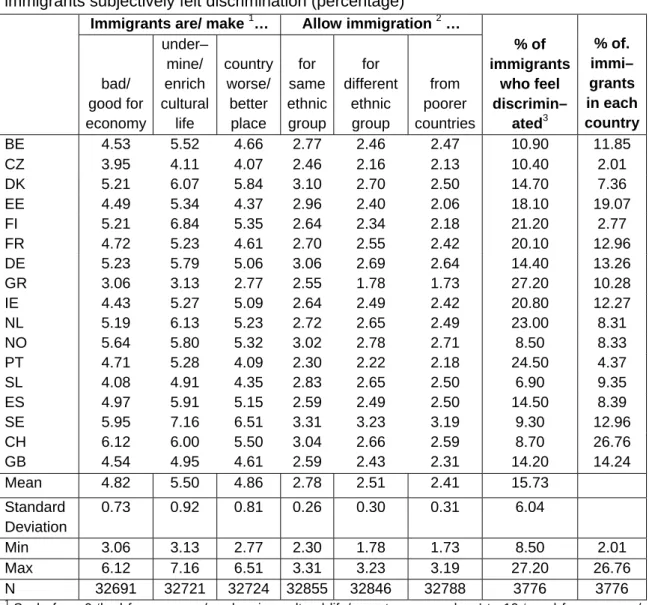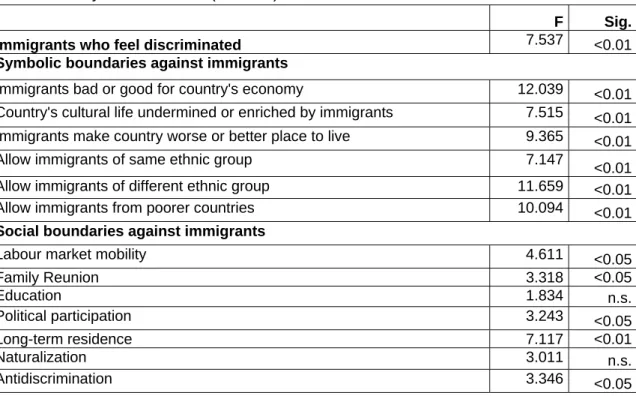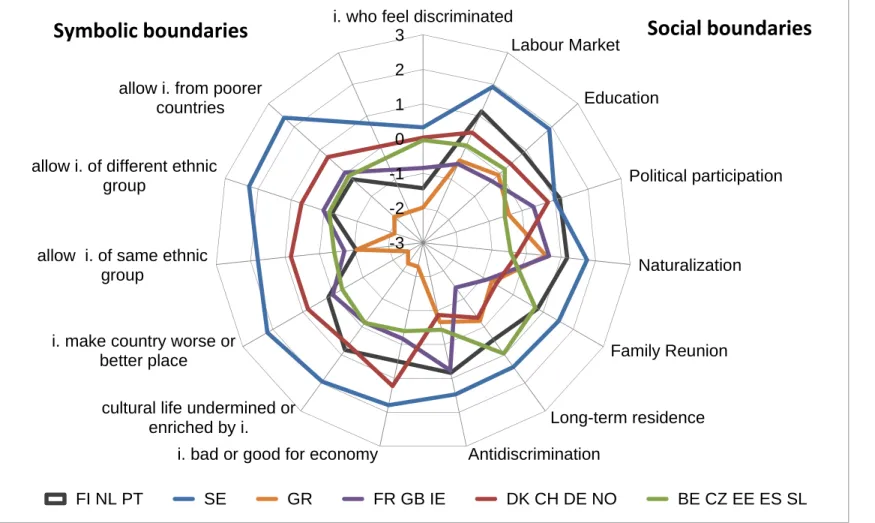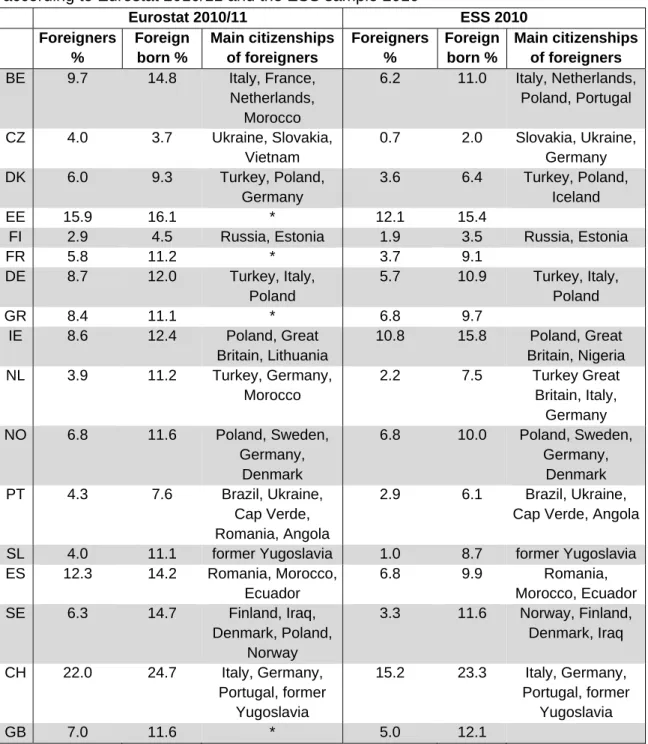Boundaries against immigrants and their subjectively felt discrimination
Texte intégral
Figure




Documents relatifs
For French-natives of type 2, low college attainment has a negative impact on the PC employment probability (38 percentage points for the 1st contract, 33 for the contract at 2
identified as protective for depression in a population of poor Afro-American mothers, but that study did not examine the joint effects of ethnic discrimination and lack of
Figure 1 depicts the empirical hazard function based on the Kaplan-Meier estimators. Panel A shows the hazard function for the foreign and U.S-born individuals. The general pattern
I hypothesised that feelings of cultural and intergenerational belonging would be protective factors against loneliness, whereas the feeling of not fitting in might be a risk
No differences in life-satisfaction were found, but those who plan to return used fewer self-regulatory strategies compared to those who want to stay or commute; in the STAY
The results presented below refer to (1) perceptions of ethnolinguistic vitality; (2) Albanian pupils’ self-assessments of language competence in Albanian and Greek and language
Initial location choices are analysed for immigrants categorised according to country of origin and migration motive (namely labour, family, and asylum migration) by
The relative success of female students in secondary education is also perceptible in higher education since their drop- out rates are lower (0.8). The risk of dropping out
